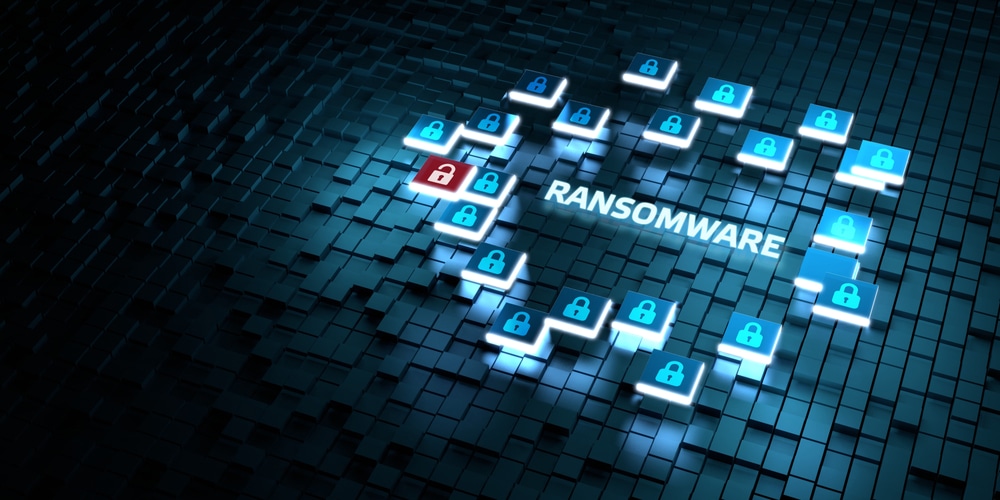Es ist keine Frage des Ob, sondern des Wann!!
Ransomware-Angriffe sind zu einer der größten Bedrohungen für die Cybersicherheit von Unternehmen weltweit geworden. Angriffe können erheblichen Schaden anrichten, indem sie wichtige Daten verschlüsseln und eine Zahlung im Austausch für einen Entschlüsselungsschlüssel verlangen. In vielen Fällen müssen Unternehmen das Lösegeld zahlen, um ihre Daten wiederherzustellen. Jede Zahlung heizt das Problem auf der übergeordneten Perspektive natürlich an und birgt immer das Risiko, dass keine Entschlüsselung erfolgt, da die Erpresser zwischenzeitlich abgetaucht sind.
Eine der größten Herausforderungen im Umgang mit Ransomware-Angriffen besteht darin, sicherzustellen, dass Unternehmen über eine zuverlässige und aktuelle Sicherungskopie ihrer Daten verfügen, die zur Wiederherstellung ihrer Systeme verwendet werden kann. In vielen Fällen können jedoch auch die Datensicherungen kompromittiert werden, entweder aufgrund unzureichender Sicherheitsmaßnahmen oder durch bewusstes Vorgehen der Angreifer.
Ohne ein gültiges Backup bleibt Unternehmen unter Umständen keine andere Wahl, als das Lösegeld zu zahlen und damit ihre Daten und Finanzen zu gefährden. Um dieses Problem in den Griff zu bekommen, benötigen Unternehmen eine zuverlässige und sichere Backup- und Wiederherstellungslösung auf Basis einer individuell durchdachten Architektur.
Backup als intelligente Gegenmaßnahme
Das Fundament ist immer eine geeignete Strategie und eine entsprechende Architektur. Da ich diesen Artikel nicht überstrapazieren will, gehe ich auf diese Aspekte in einem anderen Artikel tiefer ein. Wichtig ist, dass die Strategie muss eng am operativen Geschäft ausgerichtet werden und beispielsweise Wertigkeiten der zu schützenden Workloads enthalten.
Zurück zum Thema: Um Datensicherungen vor Ransomware-Angriffen zu schützen, benötigen Unternehmen eine mehrschichtige Backup- und Recovery-Strategie, die mehrere Maßnahmen umfasst. Eine dieser Maßnahmen ist die Verwendung eines Air-Gapped-Backup-Systems, bei dem die Backup-Daten in einer separaten, isolierten Umgebung aufbewahrt werden, die nicht mit dem Produktionsnetzwerk verbunden ist.
Auf diese Weise wird sichergestellt, dass die Sicherungsdaten vor Ransomware-Angriffen geschützt sind, die das Produktionsnetzwerk infizieren könnten. Darüber hinaus können Unternehmen ein manipulationssicheres Backup-System einsetzen, das unveränderliche Backups verwendet, um unbefugte Änderungen an den Backup-Daten zu verhindern.
Eine weitere Maßnahme ist die Verwendung einer Sicherungs- und Wiederherstellungslösung, die einen Überprüfungsprozess beinhaltet, um sicherzustellen, dass die Sicherungsdaten wiederherstellbar und frei von Malware- oder Ransomware-Infektionen sind. Dieser Prozess trägt dazu bei, dass Unternehmen ihre Systeme und Daten im Falle eines Ransomware-Angriffs schnell wiederherstellen können, wodurch Ausfallzeiten und finanzielle Verluste minimiert werden.
Sinnvolle Werkzeuge
Ich setze bei der Entwicklung einer solchen Architektur gerne auf Produkte aus dem Hause Veeam. Natürlich können Kritiker nun sagen, dass die Software von Veeam sehr verbreitet ist und somit ein lohnendes Ziel für die Suche nach Angriffsvektoren darstellt, aber ich persönlich halte die technischen Vorteile von Veeam für überwiegend. Die Software bietet eine Reihe von Funktionen, darunter “SureBackup” und das “Hardened Linux Repository”, mit denen sich eine mehrschichtige Backup- und Wiederherstellungsstrategie sehr effizient darstellen lässt.
SureBackup ist eine Funktion, mit der Unternehmen die Wiederherstellbarkeit ihrer Backup-Daten testen und überprüfen können, um sicherzustellen, dass sie über eine gültige und unbeschädigte Sicherungskopie verfügen, die im Falle eines Angriffs zur Wiederherstellung wichtiger Daten und Systeme verwendet werden kann. SureBackup kann man sich konkret als eine Art Sandbox mit dazugehörigen Test-Mechanismen in einem isolierten Netzwerksegment vorstellen. Veeam Hardened Linux Repository ist eine weitere Funktion, die eine zusätzliche Sicherheitsebene in Form eines Backup-Repository bietet, indem eine sichere, abgeschottete Linux-Appliance zur Speicherung und Verwaltung der Backup-Daten genutzt wird.
Mit diesen Funktionen können Unternehmen eine Air-Gapped-Backup-Lösung erstellen, die von der Produktionsumgebung isoliert ist und somit weniger anfällig für Ransomware-Angriffe ist. In Kombination mit dem Verifizierungsprozess von Veeam können Unternehmen sicherstellen, dass ihre Backup-Daten wiederherstellbar und frei von Malware oder Ransomware-Infektionen sind. Zuletzt können diese “smarten Funktionen” noch um einen klassischen “Air-Gappes-Aspekt” in Form einer modernen Tape Library erweitert werden. Auch eine Tape Library kann über die Software von Veeam direkt angesteuert werden und ist, wenn auch nicht immer erforderlich oder erwünscht, auch im Jahr 2023 eine relevante Komponenten einer umfangreichen Backup-Strategie.
Zusammenfassend lässt sich sagen, dass Ransomware-Angriffe eine erhebliche Bedrohung für Unternehmen auf der ganzen Welt darstellen, und der Schlüssel zur Eindämmung dieser Bedrohung ist eine zuverlässige und sichere Backup- und Wiederherstellungslösung. Mit den Backup- und Recovery-Funktionen von Veeam können Unternehmen eine mehrschichtige Backup- und Recovery-Strategie erstellen, die ihre Daten vor Ransomware-Angriffen schützt und sicherstellt, dass sie ihre Systeme und Daten im Falle eines Angriffs schnell wiederherstellen können.


